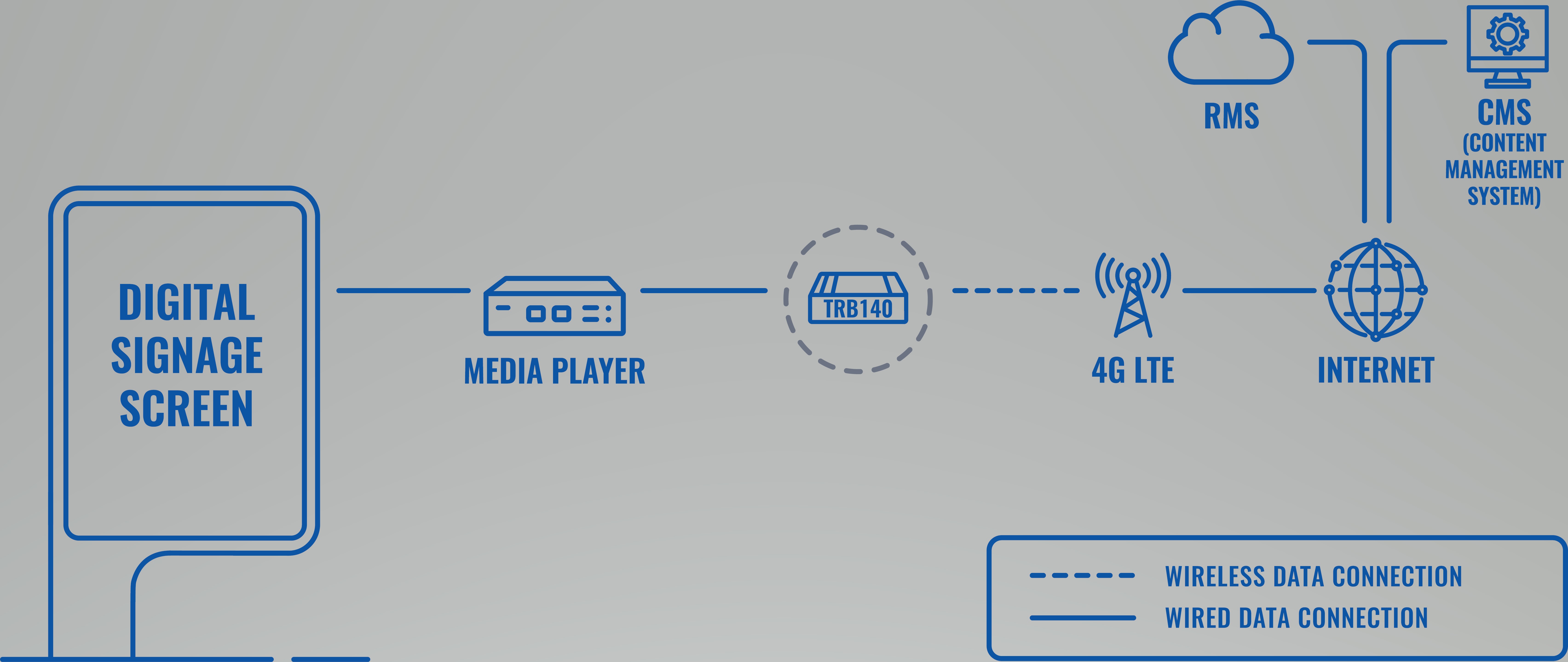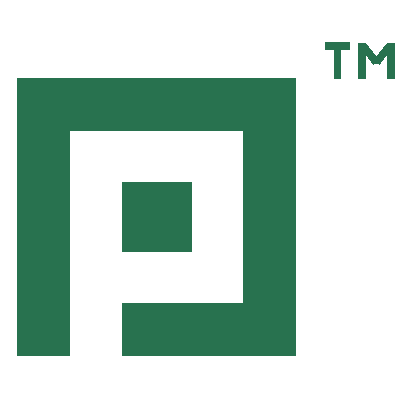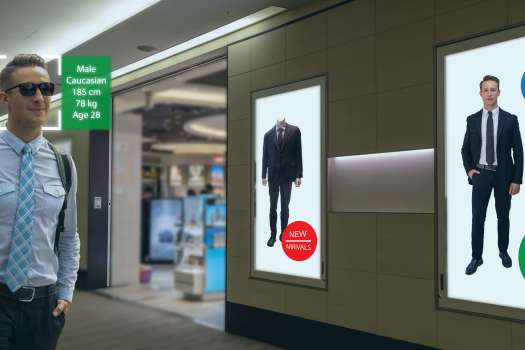Digital signage & cellular connectivity
Summary
Digital Signage is a sub-segment of electronic signage and uses different technologies including LCD, LED, projection and many others to communicate messages and advertisements to the public for marketing or informational purposes. The concept is not new at all and can be traced back to the neon signs first conceptualized by Georges Claude in 1910. Nowadays, higher quality screens and increased capabilities of media players resulted in the rising popularity of Digital Signage installations, some of which are even including concepts of augmented reality (AR). In fact, KBV Research estimates that the global Digital Signage market will reach $29.8 billion by 2024.
Challenge
The Digital Signage solution is not very difficult to understand; usually, it consists of a screen panel and a media player with storage. However, the main challenge is to be able to control what content, in which intervals, and when will be displayed. When we consider that a single operator might be responsible for thousands of screens placed around the significant area, we see that manual uploading is not an option. In order to have an efficient business, the operator of Digital Signage infrastructure must be able to upload and control content real time without downtime.
Solution
As identified, reliable and convenient connectivity is essential for efficient content management across extensive Digital Signage infrastructure. Cellular solutions based on 4G LTE are prevalent in this use case because they eliminate multiple challenges, such as pace of solution deployment, different connectivity provider management, and dependency on 3rd party wired network infrastructure, which cannot guarantee 100% uptime. As defined in the topology above, the media player is responsible for playback of marketing content, such as pictures or video, while TRB140 is the device which enables the remote upload and management of such content.TRB140 is a 4G LTE enabled gateway, which is perfect for Digital Signage solutions because it is easy to deploy and scale due to compatibility with Teltonika Networks Remote Management System. With a single TRB140, the user can manage content on the media player and change the parameters and the playing order of the content.
Topology

Benefits
-
Easy to manage – with Teltonika Remote Management System, system administrators can be in control of thousands of different sites with a single user interface.
-
Quick to deploy – no need to wait for wired Internet access contracts and installations.
-
Easy to scale – Teltonika TRB140 compatible with RMS which allows configuring an infinite amount of devices in minutes.
-
Secure - infrastructure will be safe due to advanced security features of the TRB140, such as VPN, IPsec, Firewall and Access Control.
-
Small size - TRB140 has impressively small footprint allowing it to be installed even in the most compact and design conscious Digital Signage enclosures.
Why Teltonika Networks?
TRB140 is a new device from Teltonika Networks, however, it follows our product design philosophy and is secure, reliable, and easy to use. It is small but powerful, able to provide more than sufficient speeds for uploading high definition content to Digital Signage devices. Even better, it is compatible with Teltonika RMS, which allows to manage and monitor all Teltonika Networks devices conveniently and remotely.

